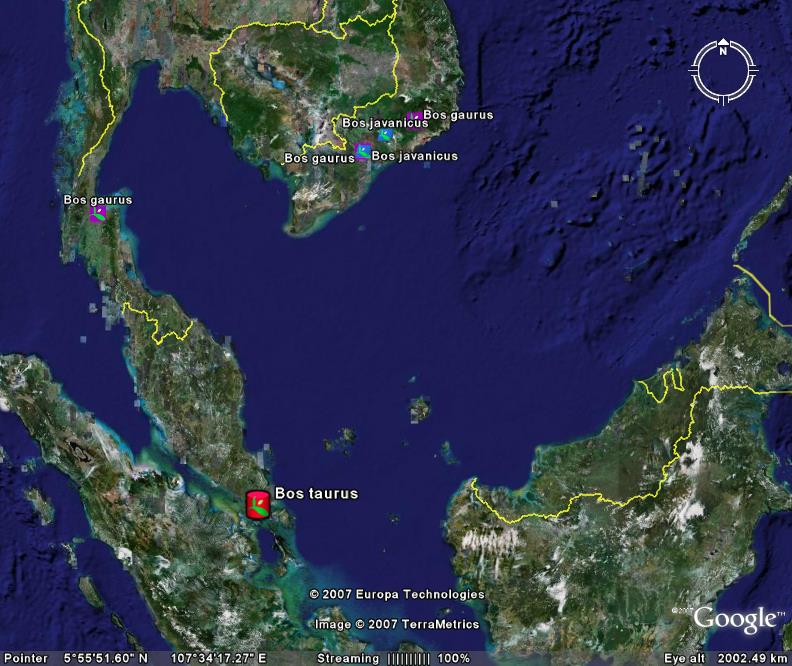We received a message from SPIN Farming, a web site that aims to show people how to make a living from what is essentially urban agriculture. The site is basically a shop front, but as the method does make very good use of agricultural biodiversity, I decided it would be worth linking to. The bias is very North American but the methods and techniques are much more widely applicable.
Mapping wild bovids
Michael’s post on the kouprey made me realize how ignorant I am on the subject of wild bovids. That, and news of the launch of the new GBIF portal, prompted some online fun and games last night.

I’ll just give you the edited highlights here. But I guarantee that playing with the GBIF data portal will keep you busy — and entertained — for hours.
I searched for all Bos spp specimens that GBIF has occurrence data for, then downloaded the resulting kml file and opened it in Google Earth. The map above is just a view of the records for SE Asia. Not that many, and none for the kouprey. Bos javanicus is the banteng. The records in southern Vietnam refer to specimens (stuffed, presumably, or maybe just skins, I’m not sure) from the Field Museum in Chicago.
I got quite excited when I saw the name of the collector. One T. Roosevelt. But it was not to be. This T. Roosevelt collected (shot?) the banteng specimen now in the Field Museum in 1929, which is ten years after the first President Roosevelt died.
I also did similar things for a couple of crop wild relatives, but I’ll keep that for another time. Remember, one of the data providers to GBIF is SINGER, to the tune of over half a million records of germplasm accessions of crops and wild crop relatives.
Later that day: So GBIF has a thing where you can send feedback on individual records, so I did that for T. Roosevelt’s banteng and within a few hours I had a email back from Larry Heaney at the Field Museum. It turns out that we’re dealing here with Teddy Jr, the president’s son, who spent a lot of time on expeditions in Asia. Larry says that there are also some specimens around collected by Teddy Jr’s brother, Kermit. Thanks, Larry. I don’t know quite why, but this whole story made my day.
New (urban) Agriculturist
New New Agriculturist out: urban agriculture in spotlight.
Seed systems
New LEISA Magazine on “Securing seed supply.”
Selecting forages
You may remember a longish post sometime back describing a piece of software called LUCID which can be used to prepare multi-access keys for the identification of species or varieties. Well, I’ve recently come across a slightly different use to which LUCID can be put. Normally you would enter into the software what each species looks like — the length of their petioles, colour of their flowers, shape of their pistils. What if, instead, you put in how each species performs under different conditions — of altitude, precipitation, soil pH, salinity, management etc.? What you would end up with is a tool for selecting which species would do well under specified combinations of conditions, or for specific purposes. And that’s exactly what a consortium of organizations interested in forages for the tropics has done. There are also factsheets on each of several dozen tropical forage grasses and legumes, including photographs and maps of suitable geographic areas.